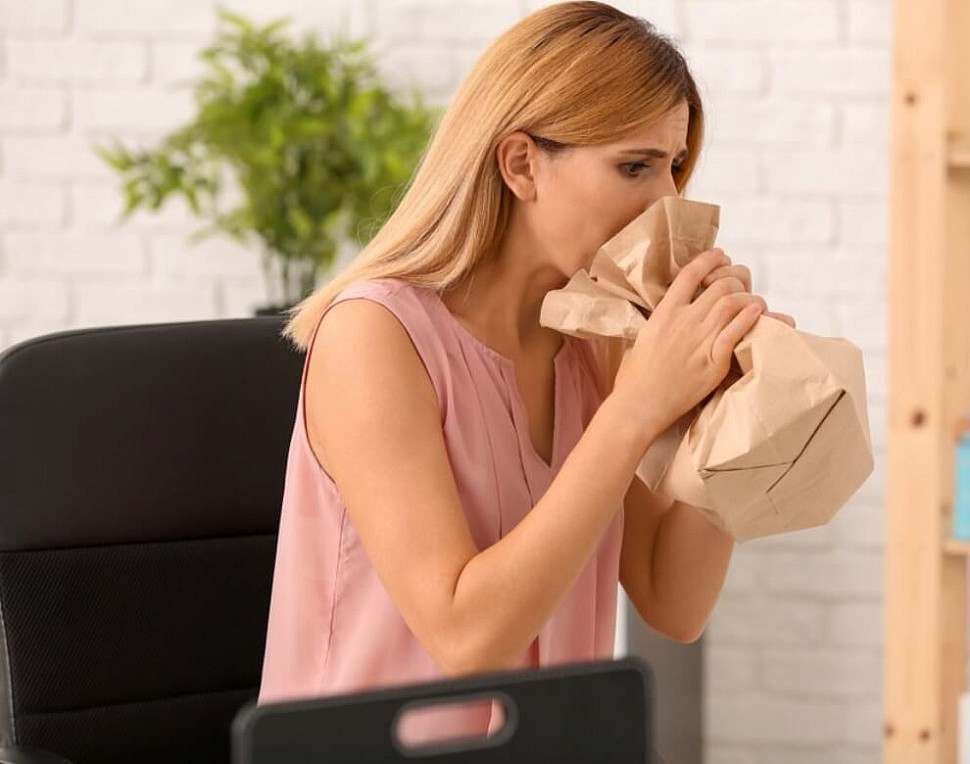Panic Attacks: Why They Are Serious

Panic attacks are attacks of pronounced anxiety. They are unrelated to any particular situation, unpredictable, and can happen repeatedly. Attacks cause autonomic symptoms, such as chest pain and clenching, palpitations, difficulty breathing, and other symptoms, but no abnormalities of the internal organs.
Panic attacks should not be ignored. Although not life threatening, the condition can severely impair quality of life. A person who has experienced a panic attack at least once lives in anticipation of a panic attack—and does not know when it may be covered by anxiety. This can be managed - with the help of drugs and psychotherapy

How does a panic attack occur?
Years ago, doctors thought that a panic attack was an aggravation of a disorder. For example, anxiety and depression, not a single disease that requires careful study. Many experts did not believe that panic attacks do not exist.
That has changed in recent years, with panic attacks now considered a separate disorder. It is known that they occur in 5% of the world's population and most often occurs in women from 20 to 40 years of age.
Why some people have panic attacks is not fully understood. Risk factors include the following:
A hereditary predisposition
Past neurotic disorders
Past psychological traumas
smoking;
Excessive use of coffee and other tonic beverages
previous stresses: severe illness, death of a loved one, divorce, loss of a job, etc.
Clinical trials have demonstrated structural and functional disturbances in the limbic system, brain stem, temporal and prefrontal cortex.
How to recognize?
A panic attack occurs unexpectedly. Sometimes the person recollects the event that caused the panic. Often, however, the experience comes with no obvious preceding factors.
Various symptoms may appear during an attack, and the person may have one or more of the following:
- A rapid heartbeat—The heart feels ready to break free from its chest
- Difficulty breathing
- Feeling airtight
- A sensation of a lump in the throat
- Shaking muscles
- Numbness or tingling in the fingers
- A headache
- Dizziness
- Chest discomfort or pain
- Excessive sweating
- Nausea
- Abdominal pain
- A sudden flush of heat
- chills.
First aid
For starters, it is important to recognize that it is a panic attack, not a life-threatening condition such as a stroke or heart attack. A person cannot die during a panic, even if they have chest pain and lack of air. When awareness comes, it becomes easier to take control of yourself.
Here are a few ways to relieve a panic attack:
Breathe in your palm or in a paper bag. Monotonic actions help calm down, and warm air slows the heart rate and reduces anxiety. For breathing, you can use a simple score: at 1-2-3-4 - breath, at 5-6 - delay, at 7-8-9-10 - exhale.
Drink water - preferably non-carbonated, warm or slightly cool. This will help you to concentrate on breathing and restore calm.

Washing. Better - a little cool water. It is advisable to wash not only the face, but also the hands. If you have enough strength, take a shower.
· Distract from other body sensations. You can count buttons on clothes or passing cars, touch something rough - wood covering of furniture, stones on the ground. Massage of the earlobes helps, rubbing the face with palms. If you don't have the strength, you can just clench and unclench your fists, pinch yourself.
The main thing is to switch your attention.
Important!
If a panic attack lasts for more than fifteen minutes and the condition does not improve, call an ambulance rather.
Prevention
To prevent new panic attacks or at least reduce their frequency, the following are recommended:
Observe the mode of the day.
To feel good and less anxious, you need to sleep at least eight hours a day, do not overwork at work and rest on time.
Be sure to do sports.
You don't have to get exhausted in the gym.
To maintain good physical fitness, people can walk around their homes or in the park, cycle, swim in the pool, or go yoga.
Do not get carried away with tonic drinks. It is recommended to limit the consumption of strong tea, coffee, cocoa, to refuse alcohol.
No smoking. Smoking appears to increase the risk of developing an attack. In particular, psychologists from the University say that there is a connection between smoking and panic attacks.
It is also important to change lifestyles so that there are fewer causes for anxiety and more positive events.
AFOBAZOLE is used
AFOBAZOLE
is used for a variety of anxiety disorders, including generalized anxiety disorder, neurasthenia, and adjustment disorders. It is also recommended for patients with various physical diseases such as asthma, irritable bowel syndrome, systemic lupus erythematosus, coronary artery disease, hypertension and arrhythmias, as well as for dermatological, oncological and other diseases.
AFOBAZOLE
is used to treat sleep disorders caused by anxiety, neurocirculatory dystonia, and premenstrual syndrome. It is also indicated for relief of alcohol withdrawal and as a cushion for withdrawal symptoms when quitting smoking.

